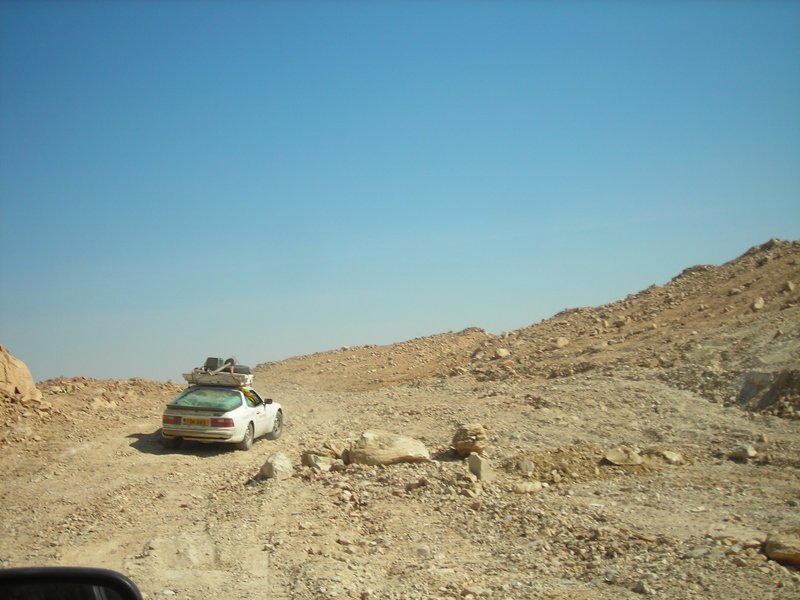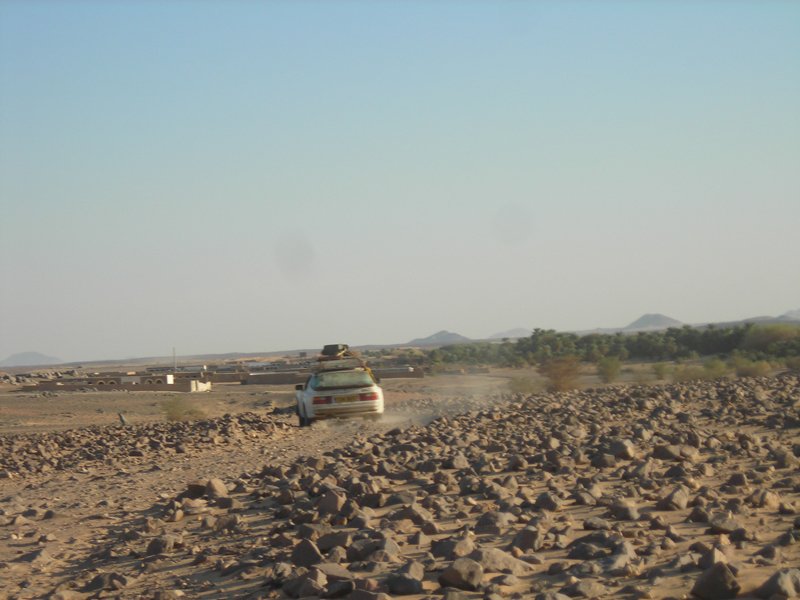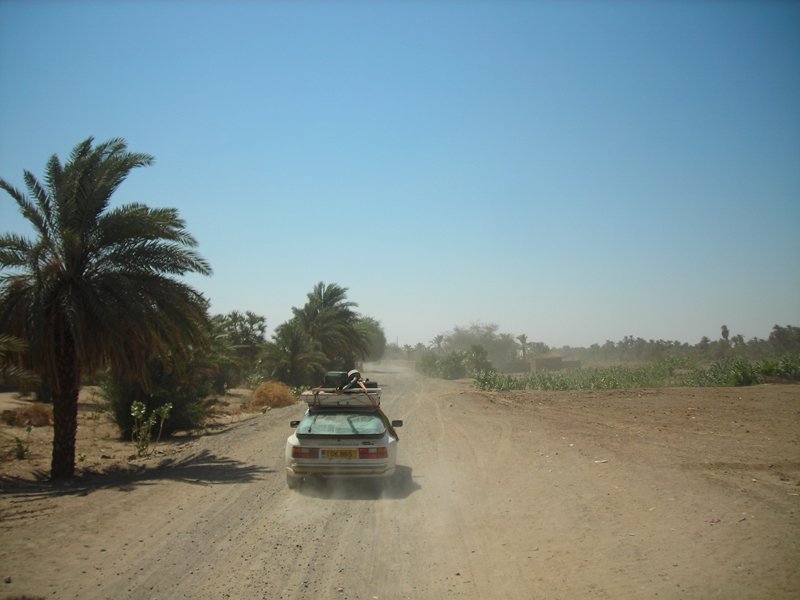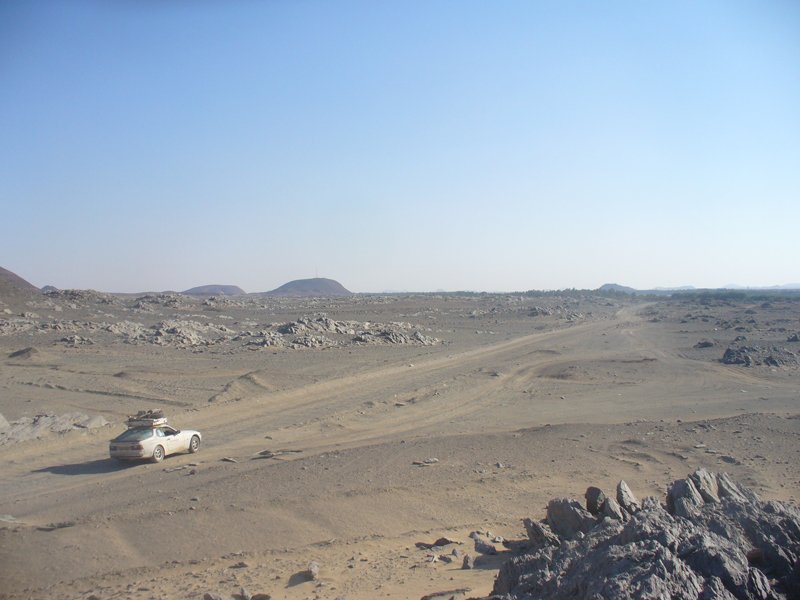Detour #218: Across the Sahara in a classic Porsche, Sudan
There’s no way around it - if you’re going to drive from Europe to South Africa, you’re going to have to cross the Sahara. And if you happen to be behind the wheel of an old Porsche, you’d better hope luck is on your side.
The Sahara is the greatest desert on earth; its crags and sands smother an area the size of Europe. When we finally got to grips with this classic overlanding challenge, we were already halfway through our north-south crossing of its vastness.
In Egypt we had barely noticed it, thanks to the linear anomaly of the Nile, whose fertile banks led us south on tarmac roads to Lake Nasser, where a ramshackle boat had gained us another few hundred effortless miles in the right direction. However, once we’d entered Sudan, the Sahara became impossible to ignore, its sands stretching away from us for hundreds of miles, undeveloped and sparsely populated, all the way to Khartoum.
After spending several days in the village of Wadi Haifa, getting our unlikely cars – a Mitsubishi Shogun and a Porsche 944 – over the border into Sudan, we put ten miles of dusty tracks under our tyres, and set up camp. This part of the Sahara is known as the Nubian Desert, and at dusk it is magnificent. Lengthening shadows bring drama to the craggy landscape as the setting sun paints the horizon pink, before an inky darkness washes it away. Stars begin to punctuate the big dome of the sky, in which no clouds could possibly form, such is the dryness of the air. The temperature falls to comfortable, and conversation turns to the challenges of the coming days.
The following morning, when we fired up our engines, those challenges became reality, as we rolled on into a landscape which consisted of only three ingredients. Pale, dusty sand predominated, and soon covered every surface inside my already-filthy Porsche. Crags and boulders of coarse black rock rose from the sands, while sweeps of gritty gravel dominated the plains. There was no life, no birds or plants. Only us, and our old cars. But through this alien landscape, a rough track led us south, with every new mile feeling like something earned rather than taken for granted. For our convoy of battered machines, progress was by no means a given. And to make that progress, we faced a quandary. Did we drive quickly, to maximise the cooling airflow and keep down the engine temperatures down, or did we slow down to protect the fragile tyres and suspension? We opted for the former, and I quietly hoped that Porsche’s legendary reputation for toughness would see it through.
We rolled on deeper into the desert, the temperature hitting a Saharan high with every new hour. The drama of the craggy, rolling landscape built with the heat as we rattled our way along the corrugated track, our passage witnessed by no one except the occasional camel train, seeking out the next oasis. The further we drove into the nothingness, the more complete our sense of isolation became, as mile after rough n’tumble mile passed with no signs of humanity, save the bumpy track beneath our wheels.
It wasn’t long before the first damage occurred. A mound of sand made contact with the Porsche’s low-slung exhaust, knocking the silencer to the ground. But we weren’t in the mood to be delayed, and so we strapped its twisted remains to the roof, fashioned ear plugs from tissue paper to keep down the noise, and pushed on through the nothingness.
Plumes of dust rose behind us, hanging in the still air as we drove ever deeper into the desert, sometimes snaking among coal-black mountains of igneous rock, on other occasions crossing vast gravelly plains. And always, the bleached-white sky dominated the view, the sun arcing across it and pumping yet more heat into a landscape which certainly didn’t need it. Navigation was a worry, but luckily for us, the track seemed to know where it was going and thanks to the slow going, our fuel supply held up well, even if water supplies dwindled at a worrying rate as the day progressed.
It was 250 miles from our camp to the next town of note, and as we approached the halfway mark, things seemed to be going well. But we’d reckoned without the fragility of the shogun’s ladder frame chassis, which had begun to wilt under the pounding it was receiving from the corrugations, cracks forming above the rear axle where repairs had been poorly executed years before. The big 4x4’s steering became vague; its rear bumper started to wobble independently of the body. A change of approach was needed. Rather than racing across the desert to keep the Porsche’s engine cool, we now had to crawl out of the desert as slowly as possible, in deference to the fragile off-roader.
We’d hoped to reach the town of Dongola that day, but our various issues meant we were still far away when darkness fell, and so once again we set up camp in the middle of nowhere, the desert around us fading to monochrome as the stars began to fill the sky.
The following morning brought soft sand to spice up the usual gravel, but the Porsche proved surprisingly capable even this far out of its comfort zone. Its light weight and wide tyres enabled it to surf over it where other cars might sink in and soon signs of civilisation began to reappear: hardy grasses and palms with poor, dusty dwellings huddled amongst them. And while the driving conditions were still as bad as ever, and the Shogun’s chassis was becoming less rigid with each mile, our confidence was rising. Every new mile was taking us a mile closer to the road which would lead us effortlessly to Khartoum.
As the day went on, the heat once again built towards unbearable, but we were used to it now, and it was the growing signs of civilisation which held our attention. Villages became more numerous, people waving and camels and donkeys moving aside as we passed. The banks of the Nile hoved into view once again, our friend from earlier in our Saharan crossing. And gradually the going got better, and the mighty river led us to Dongola, where the real road started once again.
We’d done it. Behind us lay the greatest desert on earth. Ahead, there was only tarmac. Silky smooth tarmac, all the way to Khartoum.
Words & Photography Ben Coombs Twitter | Instagram






















A road trip in Slovenia is like journeying into a pastoral past, discovers Charlotte Vowden, even when you’re doing it in an EV of the future.